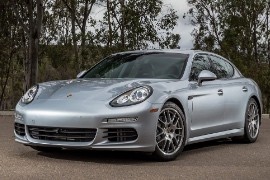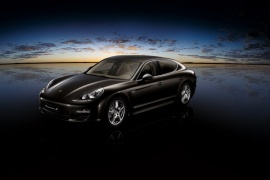PORSCHE Panamera S Models/Series Timeline, Specifications & Photos
First production year: 2009
Engines: Gasoline
Four years after the introduction of the Panamera range, the German car-maker showed the facelift for the four-door sedan in the same city, at the Shanghai Motor Show 2013.
Despite the slow and painful recovery from the world economic crisis, the Panamera found its way on the market. While the Europeans aimed for the diesel version, the rest of the world was busy with the gasoline-powered versions. The Panamera S was a good option, especially in areas where there was no need for an all-wheel-drive vehicle.
A major improvement for the Panamera S was the standard bi-xenon headlights and the option for full LED lamps. The daytime running lights were fitted with light-emitting diodes as standard. The revised front and rear bumpers brought a more aggressive look for the car. The bigger side-scoops in the apron were inspired by those installed on the 911 range. A wider rear windscreen was installed on the new tailgate.
Inside, the manufacturer installed the PCM (Porsche Communication Management) for the infotainment system. It supported Apple CarPlay connectivity, but its compatibility with Android phones was limited. The tachometer was mounted in the middle of the instrument cluster, with a round TFT display on its right side, where the navigation system could have been shown, as well as other on-board computer information.
The biggest change for the 2013 Panamera S was under the hood, where a twin-turbo 3.0-liter V6 engine was installed. It replaced the older 4.8-liter naturally aspirated unit. It was a win-win combination since it offered 20 hp more and it was more fuel-efficient. Unlike its predecessor, it was available exclusively with a 7-speed automatic (PDK – dual-clutch).
The dream of a four-door Porsche was fulfilled with the introduction of the Panamera range in 2009 at the Shanghai Auto Show. Since it wasn't an SUV, it was more important for the Porsche fans.
The idea of a four-door Porsche was not new. It was tried in the late '80s with the 989 concept car, which was based on the 911 platform. Later on, two four-doors Porsche 928s were tried by the German car-maker. After more effort, the engineering team succeeded to make the Panamera.
A four-door Porsche was hard to understand and to be accepted by some fans, but it was necessary. Those who owned a 911 needed a 4-door car to enjoy driving it daily with all the comfort and requirements from a daily driver. The Panamera was an evolution from the 928, with a front-engine and rear-wheel-drive architecture. The headlights were inspired by those installed on the Cayenne and the sloped back resembled a 911. A pair of vents were installed behind the front wheel arches. The taillights were similar to those found on the Cayman.
Inside, the Panamera designers took their inspiration from the luxury Vertu mobile phones. A four-seat layout was the only option, with a big center console that separated the driver from the other passengers. In the back, there was a decent room for adults and since it was a hatchback it could get an impressive amount of luggage.
The Panamera lineup started with a 3.6-liter V6 carried over from the Volkswagen group and found in the Cayenne as well. The Panamera S was the first fitted with a proper Porsche engine, a biturbo 3.0 lliter V6 unit that sent its power to the rear wheels via a standard 6-speed manual. A 7-speed automatic (PDK – double-clutch) gearbox was available as an option.

